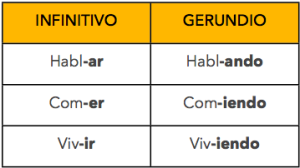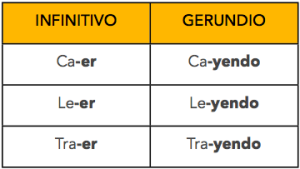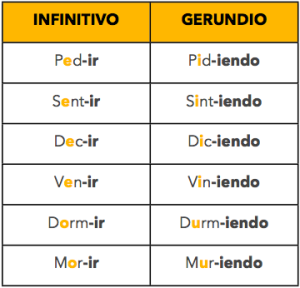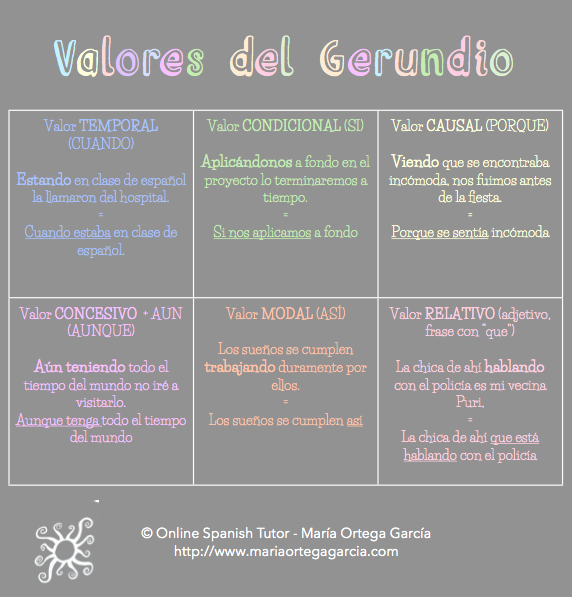Gerund. And what’s that?
FORM
We make it by replacing the endings “-ar, -er, -ir” of the infinitive with -ando (verbs that ends in -ar) or -iendo for the verbs that end in -er, -ir
Note: if the stem of the verb ends in vowel, ie. caer — ca-er, the ending for the infinitive would be -yendo.
There are some irregular verbs in the gerund form
The verbs ending in -ir with an –e or an –o in the radical change those vowels by -i, or -u.
USES
1. Temporal = while / when
– Abriendo la puerta, descubrí al ladrón. (Cuando abrí la puerta)
– When I opened the door, I discovered the thief.
2. Causal = because / since
– Viendo que se encontraba incómoda, nos fuimos de la fiesta. (Como se sentía incómoda)
– Seeing she was feeling uncomfortable, we left the party.
3. Conditional = if
– Estudiando mucho desde hoy, podremos aprobar el examen (Si estudiamos mucho)
– If we study a lot from now on, we will be able to pass the exam.
4. Concessive (+ aun) = although
– Aun lloviendo, iré a correr (Aunque llueva)
– Even if it rains, I will go for a run.
5. Modal = answer the question “how” and the gerund is equivalent to “this way”
– Los sueños se cumplen trabajando en ellos (¿Cómo se cumplen los sueños? Así = Trabajando)
– The dreams are come true by working on them.
6. Relative = sentence with “that” and works as an adjective.
– La niña hablando con el policía es mi prima. (La niña que habla con el policía)
– The girl speaking with the policeman is my cousin.
And, if you are an English speaker, this is a very important part of the post.
We don’t use the gerund…
As a subject, in which case we use the infinitive.
– Estudiar español es muy fácil.
– Studying Spanish is very easy.
Ficha de teoría: Valores_gerundio_teoria







Thank you! Estoy muy mal con “grammar” pero tu enseña muy bien!